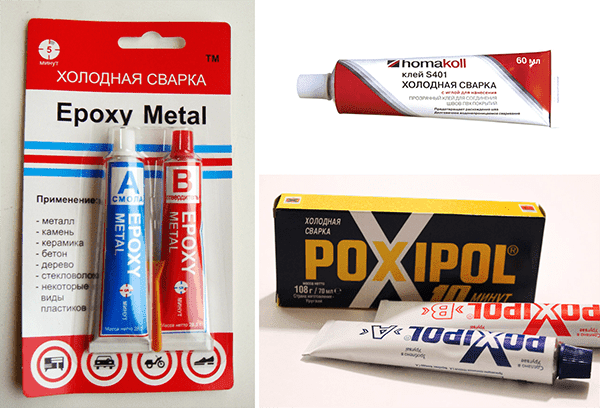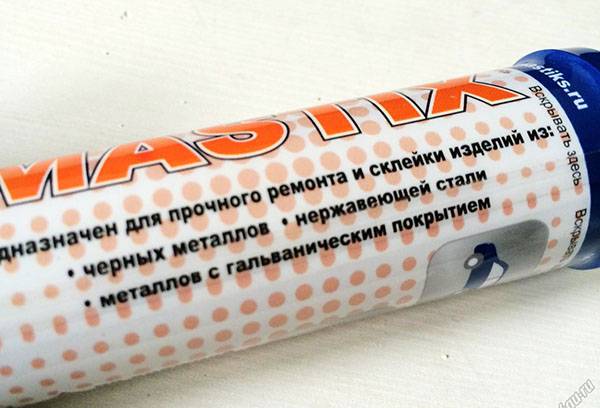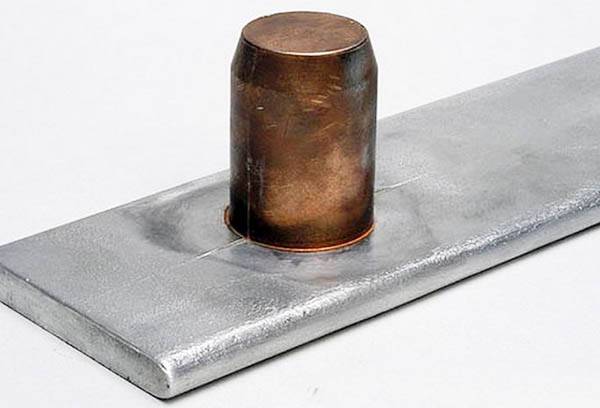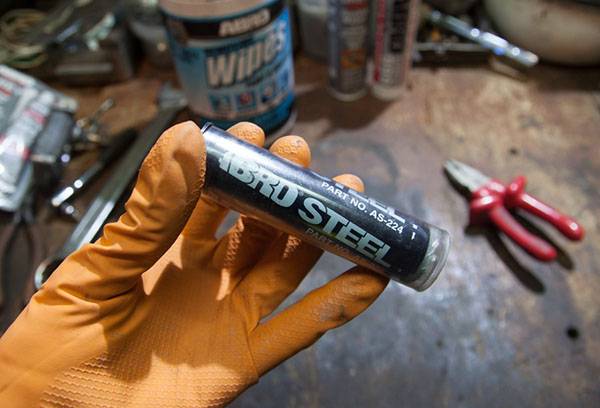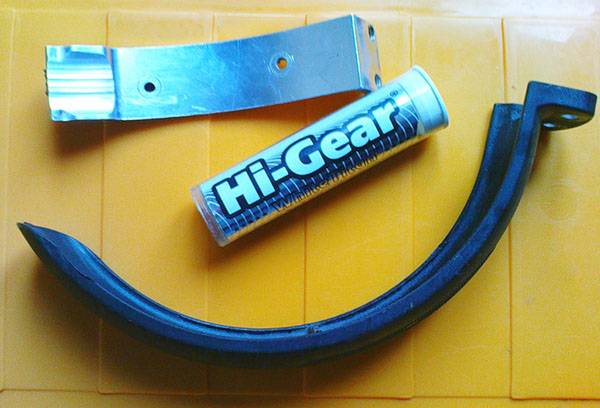Features of the use of glue "cold welding"
Content:
Among multi-purpose adhesives, glue “cold welding” is especially popular. The key advantage of this type of product is ease of use and the availability of different types. The presented assortment allows you to choose a composition that is designed for a specific task.
Varieties of formulations and their scope
Conveniently, manufacturers care about their customers and create adhesives for universal and narrow application. To purchase, it is enough to determine the range of upcoming tasks and choose what is best suited.
The main differences relate to the materials with which the glue will cope, and the characteristics of external conditions.
General list of types of glue:
- universal;
- for gluing joints of linoleum and PVC parts;
- for metal.
There is both a liquid two-component mixture, where the hardener is the second ingredient, and a one-component “welding” in briquettes, similar in appearance to plasticine. Differences in formulations practically do not affect the result, but the scope is really important.
A separate type is high-temperature “welding,” in terms of its technical characteristics it has a maximum melting and decay temperature of the adhesive composition.
Features of the composition by type
Depending on the purpose, various fillers and additional ingredients are included in the adhesive.
- Solvents are added to “cold welding” for joining PVC parts, under the influence of which a strong seam is formed. In most cases, this is an ready-to-use emulsion packed in a metal tube.
- Compositions for metal bonding contain iron oxide, microgranules of metals, quartz and other components with high adhesion to most types of materials - glass, ceramics, metal and wood surfaces, plastic. Thus, it is possible to effectively combine completely different chemical composition details.
- Universal adhesive “cold welding” is most often made on the basis of epoxy resin, supplemented by a variety of components, but there is no specific standard in composition. Universal adhesive is the most durable among all types, resistant to water, solvents, gasoline and other corrosive liquids. Often, universal glue is marked “express”, which indicates ultra-fast setting.
Also referred to as universal adhesives are the Contact epoxy adhesive, produced on the basis of epoxy resin.
Area of use: what materials can be "welded"
The manufacturer always indicates on the packaging for bonding which materials this or that composition is suitable. The general classification by type has a number of subgroups by purpose, most often this applies to “cold welding” for metals: for aluminum, for cast iron, for lead, etc.
Narrow-use formulations should be used as directed. If there are no specific instructions on the packaging, you can follow the standard rules of use.
- Glue for metal Designed to connect parts of ferrous and non-ferrous metals: copper, silver, lead, cast iron, aluminum and others.
- PVC compounds perfectly connect pipes made of hard plastic, effectively “weld” linoleum joints, vinyl tiles and other PVC products.
- Universal adhesive Designed to connect metal, rubber, ceramics, including suitable for work under water.
- High temperature or heat resistant adhesive used for gluing products from ferrous and non-ferrous metals, ceramics, heat-resistant plastic.
- Epoxy adhesive "Contact" is used for gluing faience, porcelain, wood, metal and various metal alloys, glass.
Specifications - what to look for when choosing
As a rule, the basic characteristics of adhesives are similar, but given the variety of offers from manufacturers, you should familiarize yourself with the specific features when buying.
- Setting time and bonding time. These are different concepts. Setting time determines when the composition begins to harden. Until the glue is “seized”, the parts to be joined can be more precisely customized and moved. Bonding time indicates when the composition is fully hardened.
- Recommended use temperature. In different species, this indicator can vary on average from –20 ° С to + 15 ° С. Serious deviation can affect the chemical composition of the adhesive, and its effectiveness will decrease.
- Thermal resistance. The average value for all types of "cold welding" is up to + 260 ° С, this is more than enough for indoor and outdoor work. If the area of use is associated with high temperature fluctuations, it is worth paying attention to high-temperature species, their maximum limit can reach + 1300 ° С.
- Glue consumption. This indicator is ambiguous, it all depends on the density of the parts to be connected and the user's qualifications. If paste-like glue is used, then a standard tube of 60 ml will be enough for a seam of 25-30 m. The flow rate of plastic compounds can be adjusted independently: apply a thin or thick layer.
- Color composition. This is an important criterion if the glue is used for decorative work. The gamut on the market includes several primary colors: transparent, white, black, gray.
Terms of use
Using glue “cold welding” is quite simple, the process of connecting the elements does not imply complex manipulations.
Bonding surfaces are recommended to be prepared:
- clean with fine emery paper;
- clean from coarse and fine dust;
- degrease with acetone.
When using plastic compositions, wet parts can be glued together, while the glue is evenly distributed on the surface until the first adhesion occurs.
If the amount of work is small, you can separate the desired part of the glue and hardener. The activated composition should be applied within 10 minutes for conventional types or immediately after mixing - for glue marked “express” or “second”.
After applying the glue, the parts are joined and held until fully set, for an average of 20 minutes. If fixation of products is not possible, compositions with a minimum first setting time should be used - “express”, “second”.
Tip
To reduce the drying time by 2-3 times, it is allowed to heat the glue. You can use an industrial hot air gun, in extreme cases, a normal household one with a maximum temperature setting will do.
After complete polymerization, the surface of the glue can be ground, painted, applied with finishing materials.
Popular manufacturers
“Cold welding” is performed by both foreign and domestic companies. Russian products are notable for their affordable cost, but sometimes inferior in quality to European firms.
Among the leading companies, the "three leaders" stand out:
- Hi-Gear;
- Abro;
- "Polymet".
Among the highly specialized brands it is worth noting “Tangit” - the company produces various means of sealing engineering communications and produces high-quality glue for “welding” pipes.
Glue "cold welding" combines a wide range of applications, ease of use and affordable cost. To achieve a lasting result, the user does not need specific skills or knowledge, it is enough to follow simple rules of use and follow the manufacturer's recommendations.
